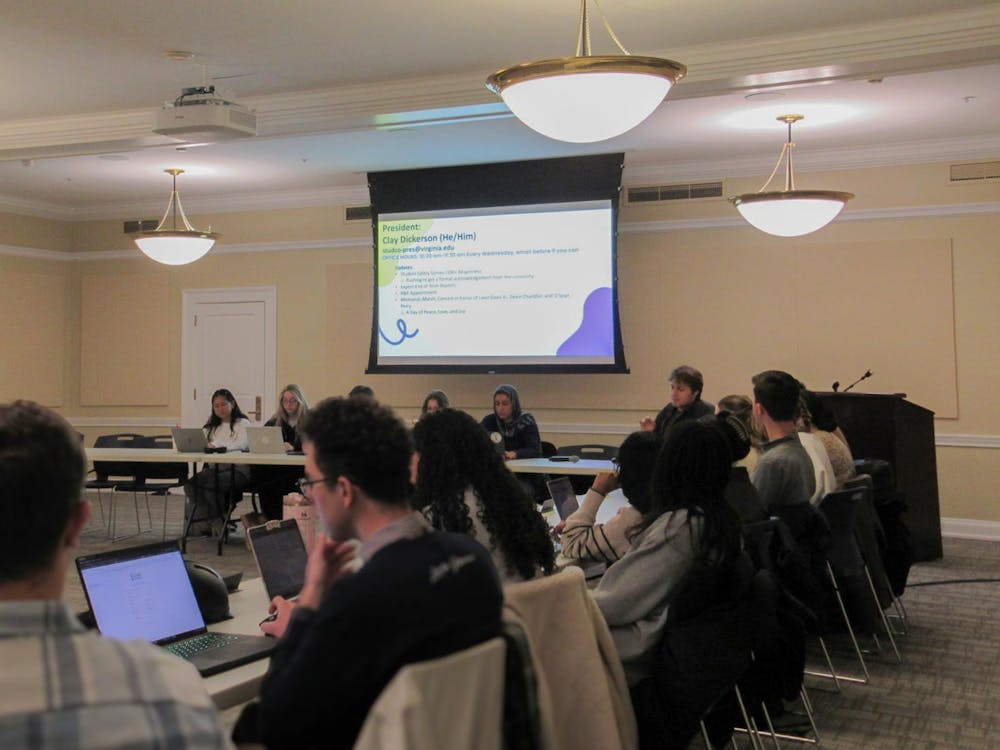Last Tuesday, a record number of registered voters arrived at various sites in the Charlottesville area to participate in what has become one of the closest presidential primaries in recent memory.
Ric Barrick, director of communications for the City of Charlottesville, said 36.7 percent of registered voters cast their ballots in the Feb. 12 Virginia primary.
Ken Stroupe, chief of staff at the University's Center for Politics, said there were "high turnouts all across the country," and attributed the main reasons for the record-breaking turnout to "the lack of an heir-apparent for either party, the historic nature of the election and a strong desire for change after eight years."
Politics Prof. Larry Sabato expressed a similar sentiment, noting "this political season has grabbed people in a way few presidential elections ever have."
According to Stroupe, this year's presidential election is very important to people on both sides of the political spectrum.
"There's a major stake in the decision-making process for both parties," Stroupe said, adding that, "the grassroots organizations of the [Hillary] Clinton and [Barack] Obama campaigns are extraordinary. They are energizing and motivating people who have never participated in this process."
Both Barrick and Sabato noted that the personalities of the candidates themselves are a driving force in this election.
In addition to candidates' personalities, Barrick noted Charlottesville's demographics typically contribute to a high voter turnout.
"Charlottesville always has a higher turnout than most of the rest of the state," Barrick said, adding that "Charlottesville voters have more education than voters across the state, and educated voters are more likely to vote."
Democrats participated in greater numbers than Republicans in the primary elections this year, Barrick said, noting that Charlottesville Democrats voted overwhelmingly for Obama, who generally "appeals to young voters."
Barrick, Sabato and Stroupe each noted that University students contributed to the record number of participating voters. Stroupe said there was "heightened interest among all demographic groups, but students and young people in generally participated in record-breaking levels."
Traditionally the 18- to 25-year-old demographic has the lowest participation in elections, Stroupe said, because many in this age group "feel as if politicians don't necessarily speak to the issues that are important to them."He added, however, that "this year is turning so many of these old assumptions around completely."
Barrick, Sabato and Stroupe all said the November general elections also will likely see very high levels of voter participation, a prediction Sabato emphasized by asserting that between 75 to 80 percent of registered voters will participate.
Stroupe noted, however, that while continued uncertainty about parties' nominees could cause some voters to become more interested in the race, it could also cause others to grow tired of the presidential election.
"The degree to which there is political infighting for the presidential nomination over the summer could influence the number of participating voters," Stroupe said.
Barrick, Sabato and Stroupe all said the record participation seen in the primaries and likely to occur in November is unique to this presidential race.
"We can only hope that voters will continue to participate [in such numbers]," Stroupe said. "But if history is any judge, then the record-setting levels of participation that we see this year are unique to the circumstances of this particular election and will likely return to more traditional levels [after November]."






